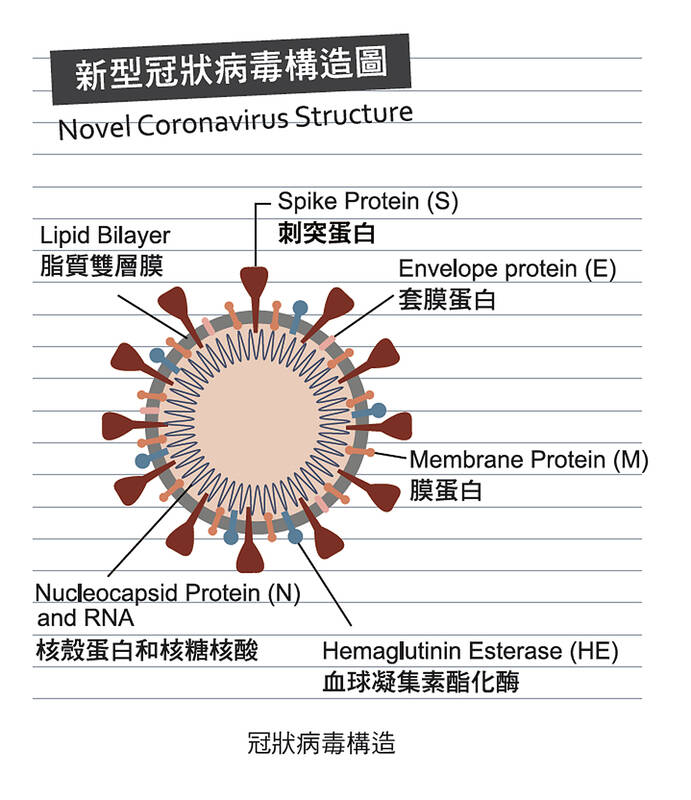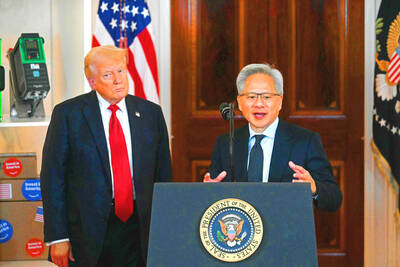COVID-19 簡介:
嚴重特殊傳染性肺炎 (COVID-19) 疫情爆發以來,冠狀病毒 (coronavirus) 成為熱門討論話題。我們利用這機會來了解病毒(virus) 的定義,以及它與細菌 (bacterium) 之間的不同。
和多數為單細胞生物的細菌不一樣,病毒甚至連細胞都不是,是由蛋白質 (protein) 形成的外殼包裹的一段 DNA 或 RNA,是一種類生物,介於生命體及非生命體之間。病毒無法獨立生長,但能感染大部分具細胞結構的生命體,它存活的方式是藉由感染宿主的細胞,再利用它們來自我複製。其形態有螺旋形、二十面體、包膜型等等。冠狀病毒就是因外表有許多突起,看起來像皇冠而得名。

Photo/Graphic courtesy of Bookman l 圖片:書林
病毒顆粒只有約細菌的百分之一。細菌等病原體無法通過尚柏朗過濾器 (Chamberland filter),但病毒卻可以。因此,1899年,荷蘭微生物學家貝傑林克(Beijerinck) 將這類物質命名為濾過性病毒 (filterable virus)。Merriam-Webster 對 virus 的定義是:
any of a large group of submicroscopic infectious agents (超顯微傳染媒介物) that are usually regarded as nonliving extremely complex molecules (複分子), that typically contain a protein coat (蛋白質外殼) surrounding an RNA or DNA core of genetic material but no semipermeable membrane (無半透膜), that are capable of growth and multiplication only in living cells, and that cause various important diseases in humans, animals, and plants
病毒學 (virology),是微生物學 (microbiology) 底下的一個分支,迄今人類已鑑定出超過 6000 種病毒。病毒的傳播方式非常多樣,流感 (flu) 病毒可以經由咳嗽和打噴嚏傳播;諾羅病毒 (Norovirus) 可以通過手、食物和水來傳播;愛滋病毒 (HIV) 則可以通過體液接觸傳播;登革熱 (Dengue fever) 通過蚊蟲叮咬傳播。攜帶病毒的生物載體,如蚊子,稱為 vector (病媒),非生物載體如:水、空氣,稱為vehicle。在通常情況下,病毒感染會引發免疫反應來消滅入侵的病毒。而免疫反應可透過注射疫苗來產生,使接種者能夠對相應的病毒免疫。

Photo/GRAPHIC courtesy of Bookman l 圖片:書林
抗生素對病毒沒作用,但有些抗病毒藥物已經研發出來,例如克流感 (Tamiflu) 就是針對流感病毒的藥物。除了 COVID-19以外,2003年爆發的 SARS(嚴重急性呼吸道症候群)、2012 至 2015 年在中東和南韓曾流行過的 MERS(中東呼吸症候群)都屬於冠狀病毒。其共同的特點是引起人類和其他脊椎動物的呼吸道疾病。
冠狀病毒讓人生畏的其中一點,便是會引起「人畜共通」的傳染病,因為宿主多元,難以防治,又容易突變。
2019 年底爆發的嚴重特殊傳染性肺炎,因為爆發地為中國武漢,一開始國內外媒體多以武漢肺炎 (Wuhan pneumonia) 稱之,其後,世界衛生組織將病毒名為 2019-nCoV,稱為 2019-nCoV 急性呼吸疾病 (2019-nCoV Acute Respiratory Disease)。
台灣官方將此疾病命名為「嚴重特殊傳染性肺炎」;中國媒體則在 2020年 2 月將其命名為「新型冠狀病毒肺炎」,簡稱新冠肺炎。
其實,英語裡的 pneumonia(肺炎)是指呼吸道感染引起肺部發炎,算是嚴重的疾病。然而不論是SARS,還是 COVID-19,其引起的症狀不一定嚴重到肺炎的程度。但在華語圈,往往把輕重不同的呼吸道症狀都稱為「肺炎」,準確的說法應稱為「疾病」 (disease)。因此「新型冠狀病毒病」才是 COVID-19 最恰當的名稱。世衛組織於2020年2 月 11 日宣布,為避免污名化特定地區 (to avoid references to a specific geographical location, … aimed at preventing stigmatization),正式將此疾病命名為COVID-19,並說明 CO 代表冠狀 (Corona),VI 代表病毒 (virus),D 代表疾病 (disease)。
註:新冠病毒病目前正式的英文名稱是 COVID-19,英美媒體則往往只把第一個字母大寫,拼成 Covid-19。像 Covid 這樣的縮寫 (abbreviation),如果把它當一個字來唸,如:/?kouv?d/,英文叫 acronym,如果是字母一個一個分別唸,譬如 FBI,英文叫 initialism。
文章由書林出版公司提供:
www.bookman.com.tw
蘇正隆 — 台灣翻譯學學會前理事長、師大翻譯研究所兼任副教授; 編著《英語的對與錯》,《世紀病毒:必讀防疫英文知識與詞彙》...等

Long before numerals and arithmetic systems developed, humans relied on tally marks to count. These simple, repeated marks — often just straight lines — are one of the earliest and most widespread methods of recording numbers. Archaeological findings suggest that humans began tallying in prehistoric times. During the Late Stone Age in Africa, humans began to carve notches onto bones to create tangible records of quantities. One of the earliest known examples is the Wolf bone, an artifact unearthed in Central Europe in 1937. This bone bears notches believed to be an early form of counting. Even more intriguing

A: In addition to Teng Kai-wei, Taiwanese infielder Cheng Tsung-che was called up temporarily to play for the Pittsburgh Pirates in early April. B: Yeah, Cheng is the 18th player in Taiwan’s baseball history to be moved up to the majors. A: Back in 2002, Chen Chin-feng became the first Taiwanese to play in the Major League Baseball (MLB), followed by Tsao Chin-hui, Wang Chien-ming, Kuo Hung-chih, Hu Chin-lung and Lin Che-hsuan. B: Those pioneers were later joined by Lo Chia-jen, C.C. Lee, Ni Fu-te, Chen Wei-yin, Wang Wei-chung, Hu Chih-wei, Tseng Jen-ho, Lin Tzu-wei, Huang Wei-chieh, Yu Chang,

When Nvidia CEO Jensen Huang revealed on Friday last week that the company is working with the Trump administration on a new computer chip designed for sale to China, it marked the latest chapter in a long-running debate over how the US should compete with China’s technological ambitions. The reasoning has sometimes changed — with US officials citing national security, human rights or purely economic competition — but the tool has been the same: export controls, or the threat of them. Nvidia believes it can eventually reap US$50 billion from artificial intelligence (AI) chip sales in China. But it so far has

Continued from yesterday(延續自昨日) https://www.taipeitimes.com/News/lang In many Western countries, the most common form of tally marks employs a five-bar gate structure: four vertical lines followed by a diagonal slash. To form this group, one begins by drawing four parallel vertical lines, each representing one. For the fifth, draw a diagonal line across the existing four. This diagonal stroke effectively creates a distinct group of five. To continue counting, just initiate a new cycle in the same manner. A set of five tallies combined with a single vertical line next to it represents the number six. Across many Asian countries, the Chinese character